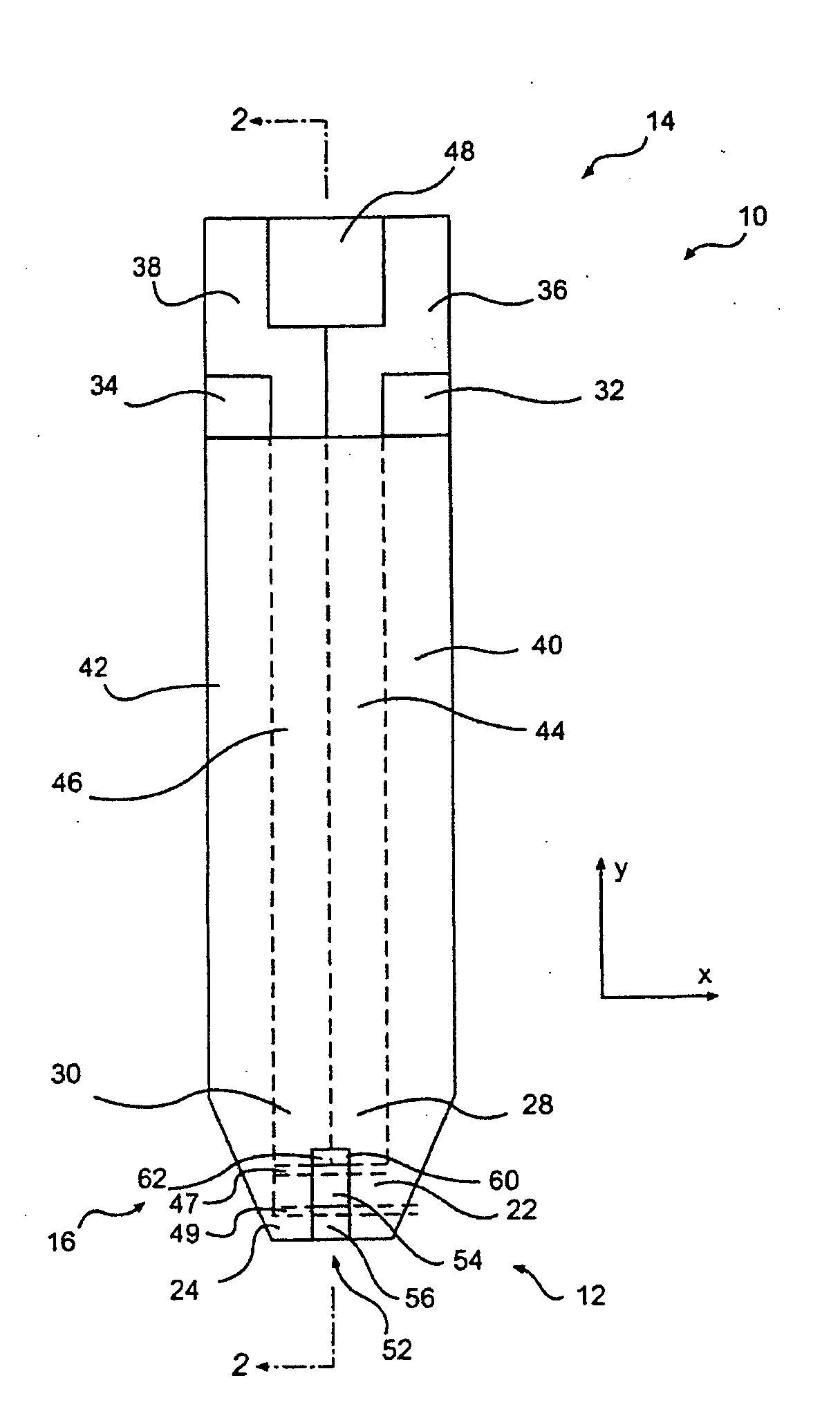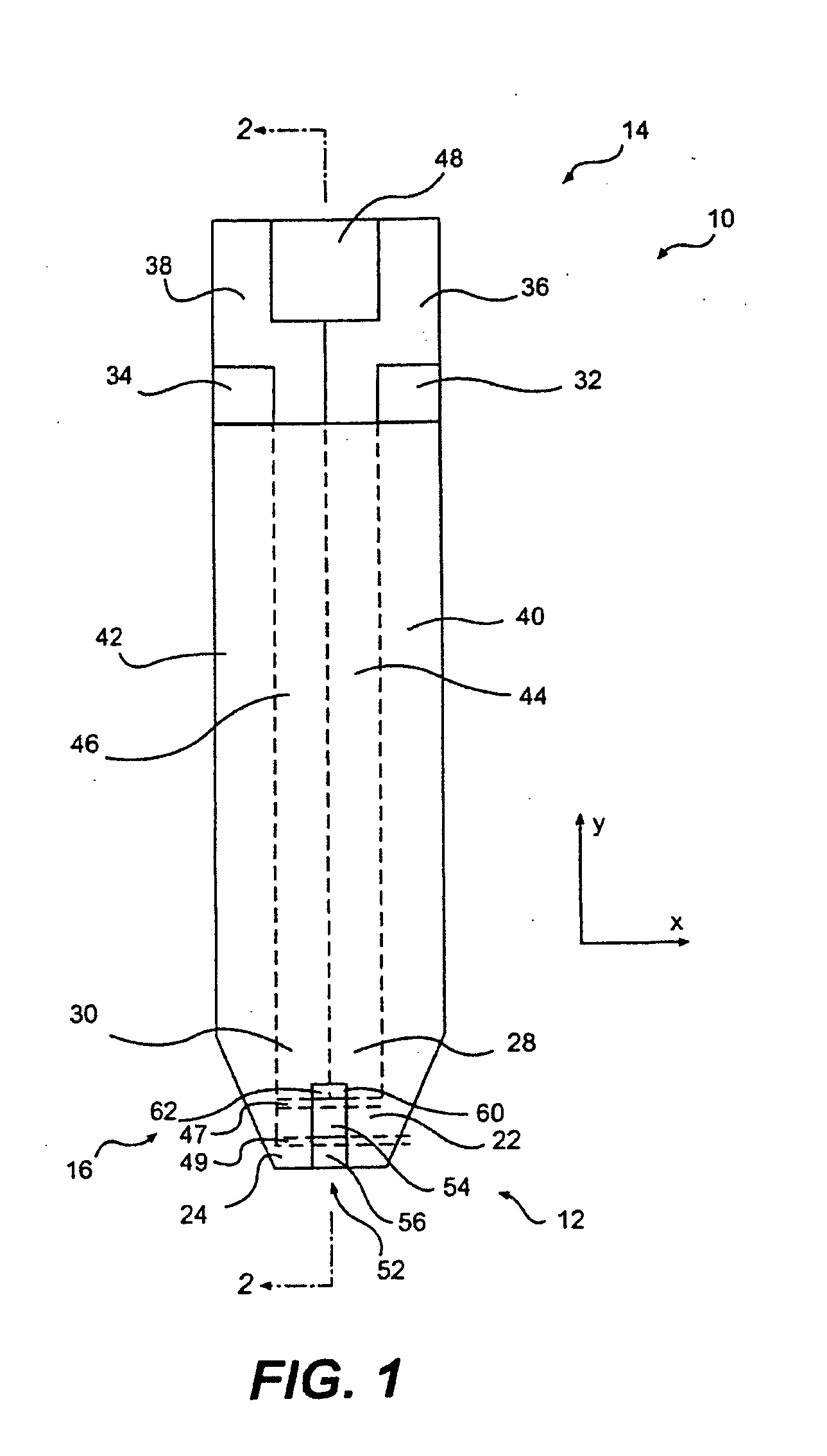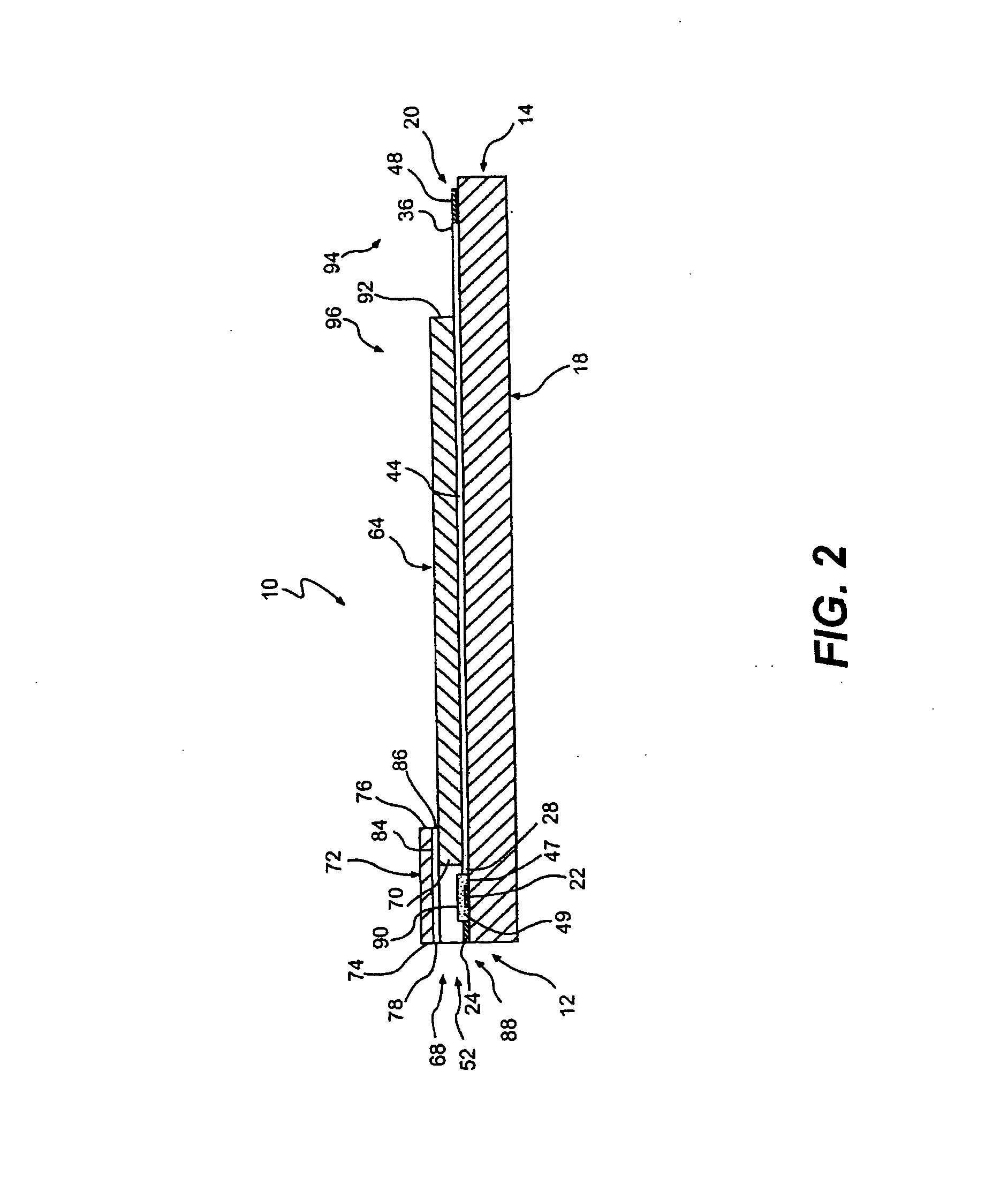Gel formation to reduce hematocrit sensitivity in electrochemical test
- Summary
- Abstract
- Description
- Claims
- Application Information
AI Technical Summary
Benefits of technology
Problems solved by technology
Method used
Image
Examples
example 1
Preparing Chemistry Comprising Borate / PVA Gel Upon Drying
[0092]This example describes a method of preparing chemistry comprising borate / PVA gel that forms a gel according to the present disclosure.
[0093]The chemistry according to this Example comprised the ingredients in Table 3.
TABLE 3Chemistry Ingredients Comprising Borate / PVAIngredientConcentrationBuffer100 mMpH6.0Surfactant0.15%Mediator125 mMEnzyme2500 u / mL (Glu Ox)PVA 1.5%Sodium metaborate0.63%
[0094]The ingredients in Table 3 were mixed together with water to form an aqueous solution having the listed concentrations. With this chemistry, a gel formed as the water evaporated during drying, due to crosslinking between the PVA and borate.
[0095]FIGS. 3 and 4 show a graphical representation of the reduced effects of hematocrit level on a sample comprising 100 and 400 mg / dL glucose, respectively, using biosensors made according to this example.
example 2
Preparing Chemistry Comprising Borate / PVA Gel Upon Mixing
[0096]This example describes a method of preparing chemistry comprising borate / PVA gel that forms a gel according to the present disclosure when the ingredients were mixed.
[0097]The chemistry according to this Example comprised the precursor ingredients mentioned in Table 4.
TABLE 4Chemistry for Gel Precursor IngredientsIngredientConcentrationBuffer100 mMpH6.0Surfactant0.15%Mediator125 mMEnzyme2500 u / mL (Glu Ox)PVA 1.5%
[0098]The ingredients in Table 4 were mixed together to form a solution that was deposited onto a sensor. While the solution was still wet, 10% by weight of sodium metaborate was deposited onto it, causing a gel to form.
PUM
| Property | Measurement | Unit |
|---|---|---|
| Percent by mass | aaaaa | aaaaa |
| Percent by mass | aaaaa | aaaaa |
| Percent by mass | aaaaa | aaaaa |
Abstract
Description
Claims
Application Information
 Login to View More
Login to View More - R&D
- Intellectual Property
- Life Sciences
- Materials
- Tech Scout
- Unparalleled Data Quality
- Higher Quality Content
- 60% Fewer Hallucinations
Browse by: Latest US Patents, China's latest patents, Technical Efficacy Thesaurus, Application Domain, Technology Topic, Popular Technical Reports.
© 2025 PatSnap. All rights reserved.Legal|Privacy policy|Modern Slavery Act Transparency Statement|Sitemap|About US| Contact US: help@patsnap.com



